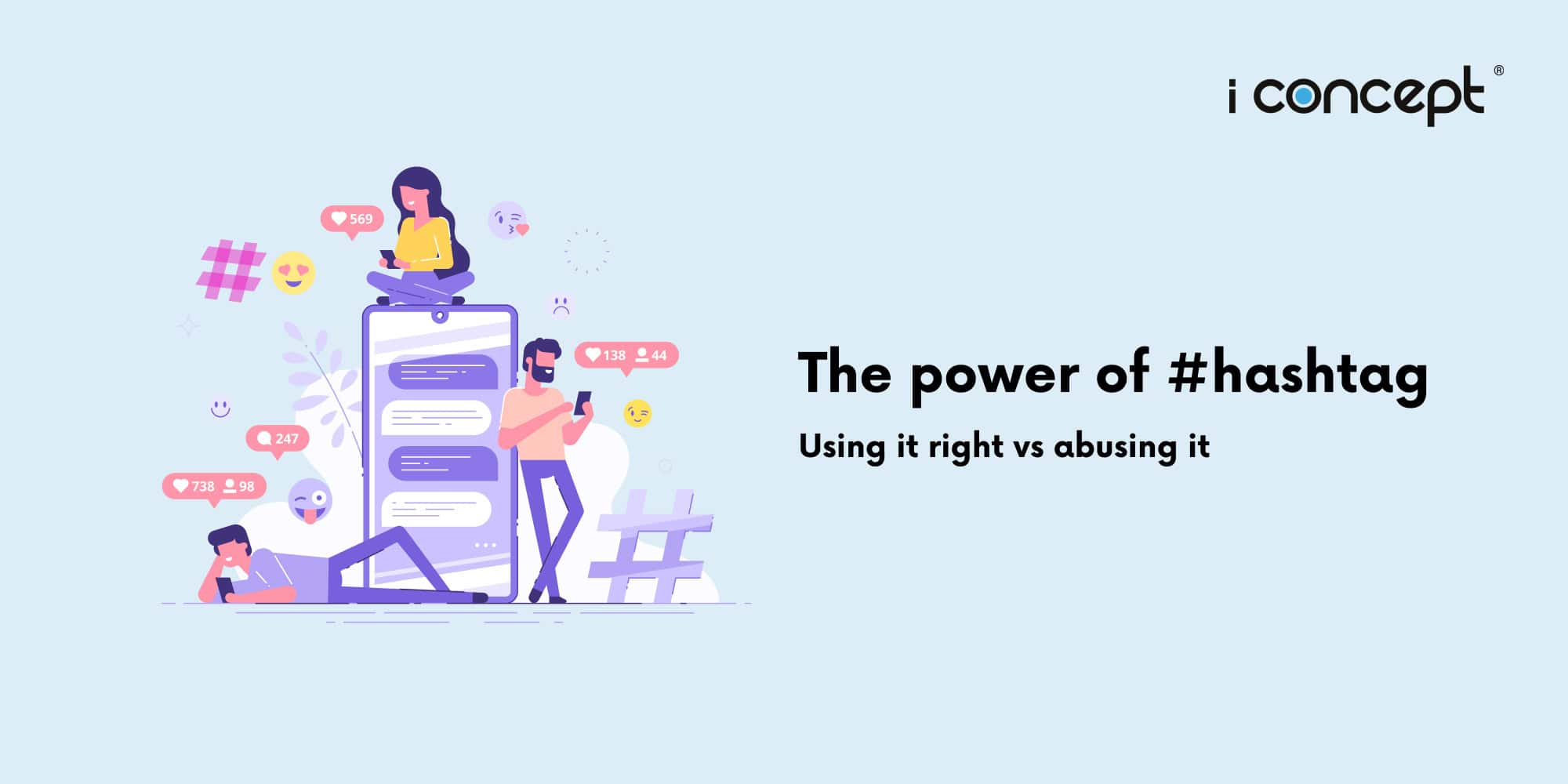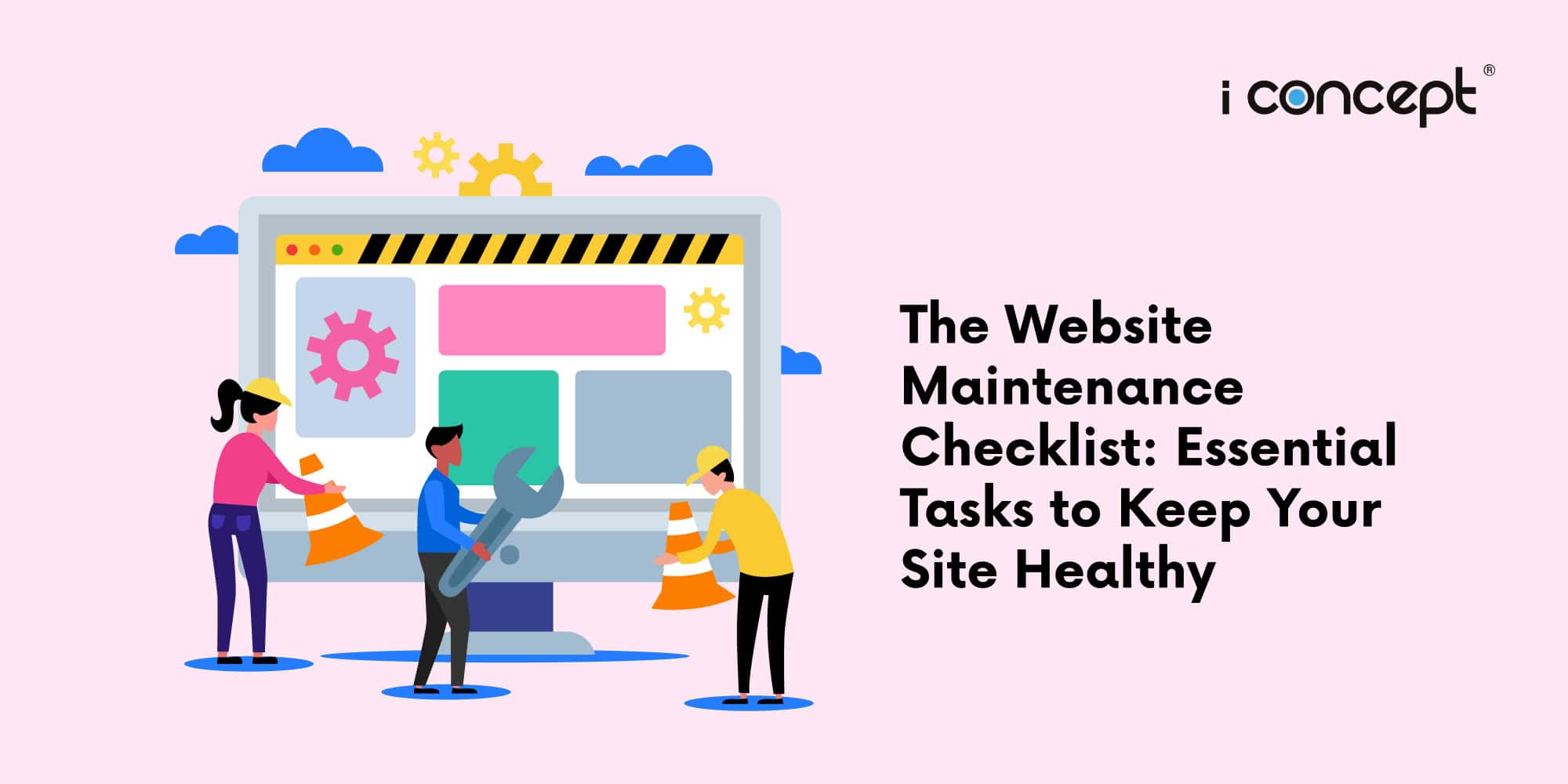The pound sign. The hex sign. The octothorpe. All also mean the hashtag. Once chosen as the word of the year, it has since evolved into something we see and use on our social media escapades on an almost daily basis. Over the past decade, it had gone from relative unknown to being omnipresent.
And then it got old quickly. For a moment it looked like the hashtag was destined to be the pet rock or pogs, a fad that flared up for a moment but was doomed to be merely of its era, filed away in the drawer where old memes and Internet debris go to gather dust.
Except it didn’t. Hashtags are still very much alive today, and it can be part of a brand strategy for small businesses and/or big corporations. So you need to know how best to use them, especially in your social media marketing efforts. Join integrated creative agency I Concept Singapore as we explore the dos and don’ts of using the #hashtag in your social media marketing efforts.
The hashtag as a search tool
Unlike other era-defining crazes, the hashtag has endured its decline because it’s useful. The core function over the symbol’s decade-plus digital career has been remarkably consistent: It helps you find things.
It became a convention that would find its way into communication, culture, art, and marketing. The hashtag was suddenly promoted from a weird extra symbol on a phone to something that would render things searchable on social media.
That’s still its primary function and should be top-of-mind when you deploy a hashtag. Use it to search. Use it to be found. Use it to file something in a certain segment of social media. It also works effectively in search engine optimisation efforts.
This can be especially useful for events.
If you’re hosting, say, a durian convention, inviting your guests to use a hashtag like #DurianSummit can help them connect with other users. They can be found by using the hashtag; they can find others who are using the hashtag; and your brand (which, in this example, is apparently durian-related) enjoys a whole bunch of visibility and engagement from people who are big enough fans to attend one of your events.
However, it’s not merely functional. Even though the renamed pound sign has lost a bit of its trendy lustre, it still carries some meaning of its own.
Hashtags and self-awareness
Talking only about the literal meaning of something is never enough. Just like everything else, hashtags have connotations, and it’s important to be aware of those extra shades of meaning if you want to use them well.
An Instagram post that features a mountain of durians while declaring “I love durians” is ever-so-slightly different from one that proclaims “I love #durians.” The latter statement is more self-aware. The addition of a simple octothorpe tells us that the writer is aware of their medium, that they are familiar with the conventions of social media communication, and that they want to be found.
It also tells you what they value. Posting “I love #durians” is a piece of content about durians, but moving the pound sign to “I #love durians” is a declaration about the extremity or your devotion to a food item. One is about food, the other is about love. The latter is also a slightly sillier tweet, and silliness remains an inescapable component of hashtags.
If it’s more explicitly self-aware, hashtags can be read as ironic, distant, or snarky. That might not be a bad thing, depending on your brand voice. But when you do create self-awareness with hashtags, think about how it looks or what shades of irony you might be adding to your writing.
Hashtags can elicit a fist-in-the-air component when used as political or social commentary. #MeToo and #BlackLivesMatter both proclaim solidarity and association with socio-political ideas. This kind of hashtag is the equivalent of unfurling a flag on social media, joining arms with your comrades, and gathering on the barricades to fight oppression. Use these types only if you’re sincere. Don’t bandwagon on a hashtag to sell something.
#HashtagAbuses
So hashtags help with visibility and your search engine optimisation work.
Great, right?
Why not load up your tweet with several of them. Don’t just say “I love #durians”; say “I #love #durians. #durianeveryday #durianislife #maoshanwangisking #durianlovesme #icannotlievewithoutdurians.”
While that will, in fact, make you visible to anyone who’s looking for those hashtags, you should resist the temptation to stuff your tweet with them.
Hashtags help you be found. However, once you’re found, you want to have the kind of content worth engaging with.
Earlier I said hashtags have the potential to demonstrate self-awareness, to show that you’re familiar with the specific nature of the medium you’re communicating in. That goes away when you go overboard. A wall of blue, octothorpe-infected type makes you and your brand look out of touch with your audience and the content they want.
At the very least, a tweet with too many hashtags is hard to read. It also makes your tweet look like spam. Using too many hashtags screams “LOOK AT ME! LOOK AT ME!” It could also look like you’re just throwing things at the wall to see what sticks.
Desperation isn’t cool. Begging for attention isn’t cool. Using too many hashtags makes you findable, but it also makes you easy to ignore. Seeing a wall of pound signs can cause readers to simply ignore tweets, though not before they have a short moment of contempt for how you’ve failed to effectively communicate.
Keep in mind that things are totally different on different digital marketing platforms. On Instagram and TikTok, where the images and visuals are doing the heavy lifting, you can load up with hashtags as an index tool. On Twitter (or Facebook), though, you have only a sentence or two to make your case, so there’s more onus on your text to be optimised. That’s where smart digital copywriting comes into play.
With that in mind, make sure you’re posting different things on the different social media marketing platforms. Or at least change your way of telling, shift your gear into clever and curated digital copywriting, and use your hashtags carefully.
How to use hashtags well
Before you spackle octothorpes all over your brand’s social media marketing channels with your digital copywriting skills, here are a few things to keep in mind:
- Understand hashtags before you use them. You never know if something has shades of meaning that you’re not aware of, and bandwagoning on a hashtag you don’t understand can be disastrous.
- Search for hashtags first to make sure they don’t have a double meaning. You’d be surprised at what could be NSFW. (that’s #notsafeforwork, by the way).
- Check relevance. If a hashtag hasn’t been used in over a year, it’s dead. Don’t use it (unless it’s relevant to an annual or recurring event).
- Don’t use too many. A good rule of thumb is to have no more than three clickable elements in a tweet. Too many make it spammy and unreadable.
- If possible, integrate hashtags naturally into your copy. Adding them on the end can come across as a reach.
- Hashtags, ultimately, are slightly self-aware indexing tools. Make sure your hashtag is supporting something that’s actually worthwhile for your audience.
- Don’t use political or social commentary hashtags to sell things. It will work your way up the wrong alley.
- If you try to create a new hashtag, make it a simple one that your target audience can remember, and they can search for it, or better, use it and promote it.
Getting social media marketing done right
If you still aren’t sure how your brand should be taking on hashtags and creating content for your social media audience, I Concept Singapore may be able to help!
As a top integrated creative agency in Singapore, our years of experience in social media management and digital marketing has enabled us to expertly offer social media strategies that optimise branding for businesses.
Beyond that, our team of experienced strategists and designers will guide you to creating a stronger brand through a variety, from content creation to logo design for the company. Get in touch with us today!
